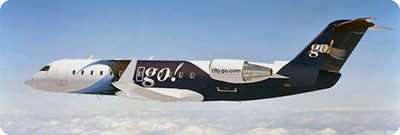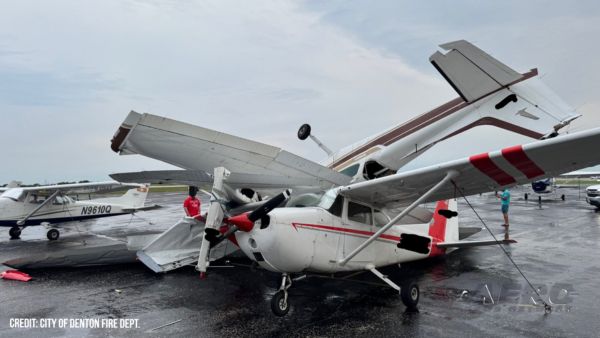Job Stress, Warm Sun Combined To Lull Crew To Sleep
 A
frenzied effort to get back on schedule, combined with a warm
cockpit, are the reasons cited by one former go! Airlines pilot why
he and his first officer fell asleep on a flight to Hilo, HI in
February.
A
frenzied effort to get back on schedule, combined with a warm
cockpit, are the reasons cited by one former go! Airlines pilot why
he and his first officer fell asleep on a flight to Hilo, HI in
February.
"Working as hard as we had, we tend to relax," the pilot told
investigators, according to an 11-page National Transportation
Safety Board report cited by USA Today. "We had gotten back on
schedule, it was comfortable in cockpit, the pressure was behind
us. The warm Hawaiian sun was blaring in as we went eastbound. I
just kind of closed my eyes for a minute, enjoying the sunshine,
and dozed off."
USA Today reports that's the first official confirmation the
crew of Flight 1002 did, in fact, fall asleep for about 18
minutes... though the writing was clearly on the wall long before
that.
As ANN reported, both pilots were grounded
following the February 13 incident, in which the jet flew past Hilo
at 21,000 feet and out to sea. Controllers first had difficulties
contacting the crew about 15 minutes after the commuter flight left
Honolulu on the 214-mile island hop; they were able to reestablish
contact with the groggy crew only after their CRJ200 had overflown
its destination.
The NTSB report does not identify the flight crew by their
names, but FAA records reveal Captain Scott Oltman and First
Officer Dillon Shepley were later suspended by the agency for
careless and reckless operation. They were also fired by the Mesa
Air Group subsidiary.
In addition to confirming what was pretty much a foregone
conclusion, the NTSB report also reveals the details of how the
event occurred. Captain Oltman told investigators he and the FO
were stressed, after a flight attendant showed up late for their
first flight of the day. The crew subsequently felt "rushed," as
USA Today puts it, to get back on schedule.
By the time the crew's third flight of the day rolled around,
they were more-or-less back on schedule... and as Oltman says
above, the combination of easing tensions and the warm Hawaiian sun
took its toll on both pilots.
Shepley, the flying pilot, was the first one to awaken.
After checking the plane's course and fuel status, he woke the
captain... who initially lied to controllers when queried why they
had been unresponsive. "No, we must have missed a hand-off or
missed a call or something," Oltman responded when asked if they
needed to declare an emergency, according to the report.
After circling back and landing at Hilo, the crew told
controllers they had dialed in the wrong comm frequency. Smelling a
rat, controllers responded they would contact Mesa to report the
incident.
Oltman and Shepley flew the return leg to Honolulu, after
discussing between them whether they were fit to do so. But they
removed themselves from flight line duty after that.
Following the incident, Oltman was diagnosed with severe sleep
apnea, which causes those afflicted to repeatedly stop breathing
while trying to sleep... a condition his physician said could cause
"significant fatigue."
The captain also admitted he would take quick catnaps in the
cockpit at least once a week in his short time flying for go!, and
would nap more often while flying for Mesa in the continental US.
That's not necessarily against the rules, as FAA regulations do
allow for a "rest period" for one flight crew member during the
cruise segment of the flight.

Shepley does not suffer from the same condition... but he told
investigators he experienced a 'sleep-like state' during Flight
1002, in which he could "hear what was going on but could not
comprehend or make it click."
 NTSB Prelim: Lancair NLA-275-FR-C
NTSB Prelim: Lancair NLA-275-FR-C ANN's Daily Aero-Linx (09.12.25)
ANN's Daily Aero-Linx (09.12.25) Aero-News: Quote of the Day (09.12.25)
Aero-News: Quote of the Day (09.12.25) ANN's Daily Aero-Term (09.12.25): North Atlantic High Level Airspace (NAT HLA)
ANN's Daily Aero-Term (09.12.25): North Atlantic High Level Airspace (NAT HLA) Aero-News: Quote of the Day (09.13.25)
Aero-News: Quote of the Day (09.13.25)




